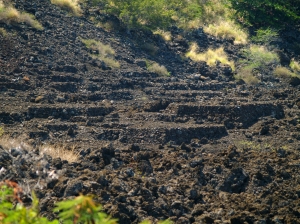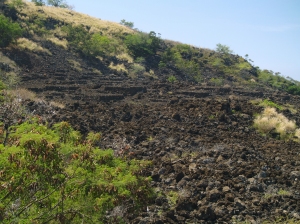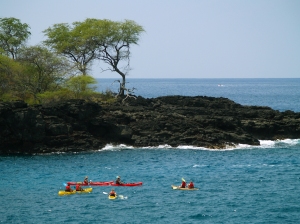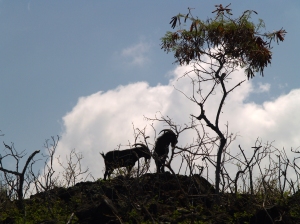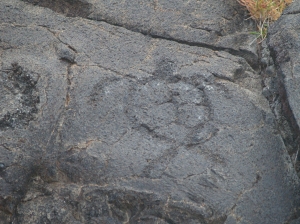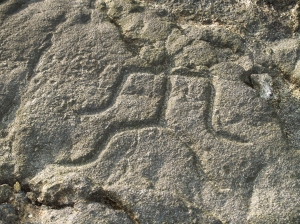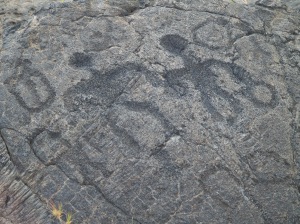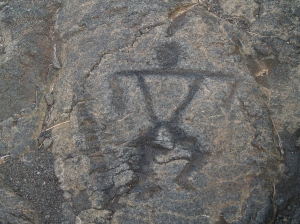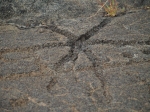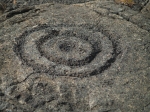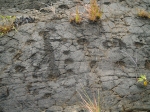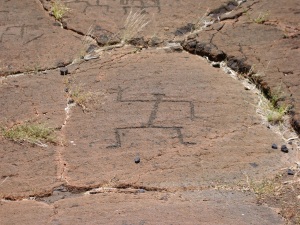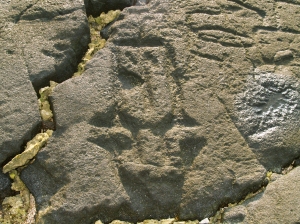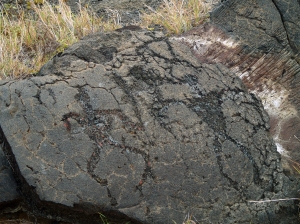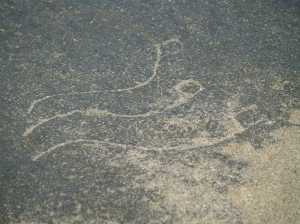Help Save the University of Wyoming Geological Museum!!!
***UPDATE***UPDATE***UPDATE***UPDATE***UPDATE***UPDATE***
The Casper Star-Tribune has an online poll today to vote for either a full time, part time or closed Geological Museum. We all need to show the administration at the University of Wyoming what we think of their recent decisions. So head on over to the Casper Star-Tribune website and scroll half-way down the page and vote! Thanks!
So far, the vote is 93% in favor of having the Museum open on some basis, 5% in favor of closing and 3% in favor of turning the Museum into a skate park. In fact, the facetious answer of "turn it into a skate park" is statistically similar to those who want to close it! Keep the pressure on the feckless UW Administrators who want to favor losing athletic teams over academic pursuits and the fanatic Religious Right who want the Museum closed on religious grounds
Add your voice, here!
ALSO: Remember to keep the letters to the Editor and to UW officials pouring in. Email address available below, as well as here.
Don't let the creationists, religious zealots, christards and intelligent design hoaxers win! Express your opinion here: http://www.trib.com/
Wyoming Fossil Fish (source: http://www.treasure-hunting-team.com/Pictures/Fossil-Fish-1.jpg)
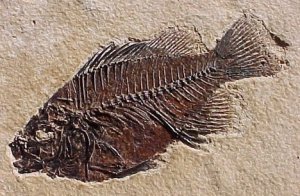
Previous Post:
The Administration of the University of Wyoming have decided to close the Geological Museum due to a funding shortfall. Despite continuing to lavish millions upon millions of tax dollars on a lack-luster-to-losing Division 1-A Athletic Program, the Administration has tried to reconcile this shameful misallocation of funding as loss of Bowl and television revenue, loss of tradition and loss of long-standing inter-collegiate rivalries.
Well wah-fucking-wah.
What about the 122-year tradition of excellence at the UW Geological Museum? What about the thousands upon thousands of primary, secondary and college students who annually come to the museum to have their curiosity nurtured, scholastic experiences enriched and their intellects stimulated? What about the hundreds and hundreds of families who visit the museum each year who otherwise would not come to Laramie and spend money in the local economy?
In fact, revenues from athletics does not come close to compensating the residents of the State of Wyoming for the millions and millions of tax dollars in real cost these programs suck in--just look at the waste of many millions in the new stadium sky boxes as just a single example. The details of this bait-and-switch deviousness can be found in the UW budget numbers (see for example here: http://www.uwyo.edu/president/info.asp?p=3672 and here: http://www.uwyo.edu/president/info.asp?p=11604) and the thinly disguised misinformation-as-rationale here (http://www.uwyo.edu/president/info.asp?p=11789#Revised).
If we can flush millions away on a robust, if dismally-performing, athletic program, can we not find a couple hundred thousand dollars to keep the successful and popular Museum funded?
Provost Myron Allen proposes his plans for the UW Geological Museum here (http://www.uwyo.edu/presidentsupport/outbox/2009/geology_museum_15_jun_09.pdf). Although a brilliant mathematician and otherwise decent guy, Dr. Allen's proposal for closing the museum manages to be simultaneously short-sighted, amateurishly incomplete and maddeningly misleading.
In a personal e-mail, Dr. Allen assured me that Christian intolerance, religious superstitions and irrational creationist beliefs played no part in the closing of the Museum. However, a quick survey shows that such scientific illiteracy and non-reality-based belief systems are rife among many of the the UW Trustees as well as some Members of the Wyoming State Senate and House of Representatives; perhaps this explains the lack of vociferous opposition to this obscene and perverse misallocation of University resources.
The fact that, in this day and age, in this state, so many University Trustees, Senators and Congressmen do not understand the value of a Museum, the fundamentals of science nor even subscribe to any modern notion of science, underlines emphatically and exactly why this University has an absolute ethical responsibility and urgent need to keep this museum open.
Perhaps it is not possible for non-scientists (such as the UW President and Provost) to understand the importance of science museums, but science and technology only grow though fostering early interest in young students--this is done primarily through programs like the UW Geological Museum. Every time Drs. Buchannan or Allen listen to their iPod, check their schedules on their handheld, email their colleagues or microwave popcorn to eat while watching their plasma screen Televisions, perhaps they should stop and consider the enormous debt Americans pay daily to scientists and engineers developing and refining new technology to produce new products. Scientists and engineers who chose, and excel at, their professions precisely because as children they had access to, and were captivated by, programs such as the UW Geological Museum provides.
Or perhaps it is our job to remind Dr. Buchannan and Allen of their debt and responsibility to the future. Below are a list of the most essential people for you to contact and express your outrage at an institution that is willing to pour millions and millions and millions of tax dollars, year after year, into losing athletic programs that produce nothing, while letting a successful, brilliant and beloved academic program, such as the UW Geological Museum, die simply to save a couple measly hundred thousand dollars. It is clear to even the most casual observer that this is not in the best interests of the people of Wyoming, nor in the spirit of academic excellence to which UW claims to aspire, nor even in keeping with the simple recognition that these men are responsible for preserving for the future the best parts of the present at UW.
Drs. Buchannan and Allen, if allowed to carry through with this hideous misallocation of tax money, are failing miserably at all three tasks.
I am reminded of how Winston Churchill is reported to have once characterized a similar caliber decision: "Save us from the maliciously ignorant and the aggressively stupid!"
Write. Today. NOW. EVERYBODY ON THE LIST!
Sincerely and with hope-
Donald B. MacGowan, PhD
For MORE go here and here.
ADDRESSES:
Important UW email Addresses:
President of the University of Wyoming
Tom Buchannan
tombuch@uwyo.edu
Provost of the University of Wyoming
Prof. Myron Allen, Provost
allen@uwyo.edu
Chairman, Department of Geology and Geophysics
Prof. Art Snoke
snoke@uwyo.edu
State Geologist
Dr. Ronald C. Surdam
rsurdam@uwyo.edu
Governor of the State of Wyoming
Governor Dave Freudenthal
governor@state.wy.us
Letters to the Editor:
kerry.drake@trib.com
http://www.wyomingnews.com/our_services/letter_to_the_editor/
dthomsen@laramieboomerang.com
openforum@denverpost.com
University of Wyoming Trustees:
Jim D. Neiman
jimd@neiman.biz
Warren A. Lauer
warrenlauer@lauerlegal.com
Dave Bostrom
mba-db@mbawyoming.com
Dick Davis
dick@davisandcannon.com
Betty Fear
bfear@centurytel.net
Taylor Haynes, M.D.
rangebeef@aol.com
David F. Palmerlee
dpalmerlee@vcn.com
Bradford S. Mead
bradmead@wyoming.com
Ann Rochelle
arochelle@casperlaw.net
James Trosper
jltrosper@wyoming.com
Ex Officio Trustees:
Jim McBride
supt@educ.state.wy.us
Kelsey Day
asuwpres@uwyo.edu
Elected Officials:
Members of the Wyoming House of Representatives
Representative Rodney "Pete" Anderson
randerso@wyoming.com
Representative George Bagby
g.bagby@bresnan.net
Representative Joseph M. Barbuto
jbarbuto@wyoming.com
Representative Rosie Berger
rberger@wyoming.com
Representative Stan Blake
sblake@wyoming.com
Representative Dave Bonner, Jr.
dbonner@wyoming.com
Representative Bob Brechtel
bbrechtel@wyoming.com
Representative Kermit C. Brown
kermitbrown@wyoming.com
Representative Edward A. Buchanan
ebuchanan@wyoming.com
Representative James W. Byrd
jbyrd@wyoming.com
Representative Richard L. Cannady
rcannady@wyoming.com
Representative Seth Carson
scarson@wyoming.com
Representative Pat Childers
childers@wyoming.com
Representative Roy Cohee
roy@cytransportation.com
Representative Cathy Connolly
cconnolly@wyoming.com
Representative Bernadine Craft
bcraft@wyoming.com
Representative Kathy Davison
kdavison@wyoming.com
Representative Ross Diercks
diercks@wyoming.com
Representative Amy L. Edmonds
aedmonds@wyoming.com
Representative Ken A. Esquibel
kesquibel@wyoming.com
Representative Mike Gilmore
michaelgilmore@wyoming.com
Representative Keith Gingery
kgingery@wyoming.com
Representative W. Patrick Goggles
pgoggles@wyoming.com
Representative Mary Hales
mary.hales@realestateincasper.com
Representative Timothy P. Hallinan, M.D.
tphallinan@bresnan.net
Representative Debbie Hammons
dhammons@wyoming.com
Representative Steve Harshman
sharshman@wyoming.com
Representative Elaine D. Harvey
harvey00@tctwest.net
Representative Peter S. Illoway
pete_chloeilloway3@msn.com
Representative Allen M. Jaggi
ajaggi@wyoming.com
Representative Peter M. Jorgensen
pjorgensen@jorgensenassociates.com
Representative Jack Landon, Jr.
jlandon@wyoming.com
Representative Thomas A. Lockhart
tlockh1617@aol.com
Representative Thomas E. Lubnau, II
tlubnau@vcn.com
Representative Michael K. Madden
madden@wyoming.com
Representative Robert M. McKim
rmckim@wyoming.com
Representative Del McOmie
dwmcomie@bresnan.net
Representative Erin E. Mercer
emercer@wyoming.com
Representative Saundra Meyer
slmey@wyoming.com
Representative David R. Miller
repmiller@wyoming.com
Representative Lori Millin
lorimillin@bresnan.net
Representative Glenn Moniz
gmoniz@bresnan.net
Representative John W. Patton
johnpatton@wyoming.com
Representative Frank Peasley
fpeasley@wyoming.com
Representative Bryan K. Pedersen
bpedersen@wyoming.com
Representative Owen Petersen
opetersen@wyoming.com
Representative Frank Philp
fphilp@wyoming.com
Representative Lorraine K. Quarberg
lquarberg@wyoming.com
Representative Jim Roscoe
jroscoe@wyoming.com
Representative Mark A. Semlek
msemlek@wyoming.com
Representative Lisa A. Shepperson
lshepperson@wyoming.com
Representative Colin M. Simpson
csimpson@skelaw.com
Representative William "Jeb" Steward
jebsteward@union-tel.com
Representative Tim Stubson
tim@stampedeforstubson.com
Representative Matt Teeters
mteeters@wyoming.com
Representative Bill Thompson
billthompson@wyoming.com
Representative Mary Throne
mthrone@wyoming.com
Representative Sue Wallis
sue.wallis@vcn.com
Representative Dan Zwonitzer
dzwonitzer@wyoming.com
Representative David L. Zwonitzer
davezwonitzer@wyoming.com
Members of the Wyoming State Senate
Senator Jim Anderson
jamesda1@msn.com
Senator Eli D. Bebout
senbebout@wyoming.com
Senator Bruce Burns
bburns@dbburns.com
Senator Cale Case, Ph.D
ccase@wyoming.com
Senator Henry H.R. "Hank" Coe
hcoe@wyoming.com
Senator Stan Cooper
scooperwy@gmail.com
Senator Dan Dockstader
ddockstader@wyoming.com
Senator Floyd A. Esquibel
fesquibel@wyoming.com
Senator Gerald E. Geis
ggeis@wyoming.com
Senator John M. Hastert
jhastert2@wyoming.com
Senator John J. Hines
jhines@wyoming.com
Senator Rick Hunnicutt
rhunnicutt@wyoming.com
Senator Kit Jennings
kit@kitsenate.com
Senator Wayne H. Johnson
wajohnsonsd6@yahoo.com
Senator Bill Landen
blanden@bresnan.net
Senator Grant Larson
senlarson@wyoming.com
Senator Marty Martin
mmartin@wyoming.com
Senator Mike Massie
mamassie@msn.com
Senator Curt Meier
cmeier@wyoming.com
Senator Phil Nicholas
nicholas@wyolegal.com
Senator Drew A. Perkins
drew@schwartzbon.com
Senator R. Ray Peterson
rpeterson@wyoming.com
Senator Tony Ross
tross@wyoming.com
Senator John C. Schiffer
jschiffe@wyoming.com
Senator Charles K. Scott
charlesscott@wyoming.com
Senator Kathryn Sessions
ksessions@wyoming.com
Senator Charles Townsend
ctown@wyoming.com
Senator Bill Vasey
bvasey@wyoming.com
Senator Michael Von Flatern
mvonflatern@wyoming.com
US Senator John Barrasso
http://barrasso.senate.gov/public/index.cfm?FuseAction=ContactUs.ContactSubmit&CFID=1239277&CFTOKEN=16382076
US Senator Mike Enzi
http://enzi.senate.gov/public/index.cfm?FuseAction=ContactInformation.EmailSenatorEnzi
US Congresswoman Cynthia Lummis
http://mail01.mail.com/scripts/common/login_home.cgi?a=8f98139853a8036ef957959bc549ccbb9038a83922ff63e1f0f0eb5b4b61dfdabce6feb0bdc38a56668f46386b88ababbac9158156503c7c8e90a60cee2396f14a7bbf2ebfd857c722e5e29ca5151f69d55cb84105916d
